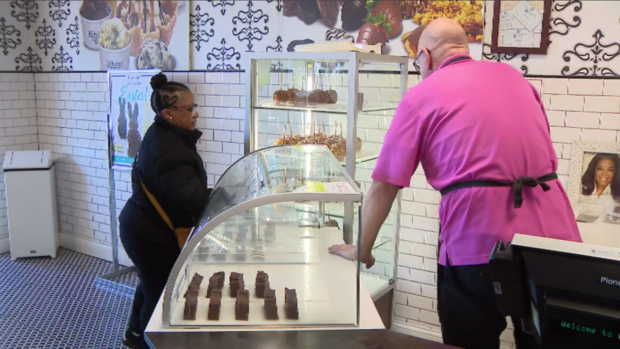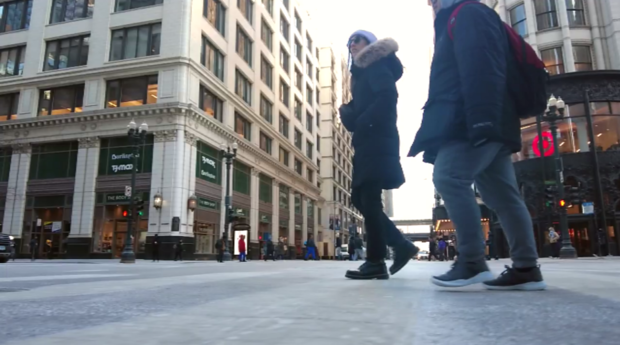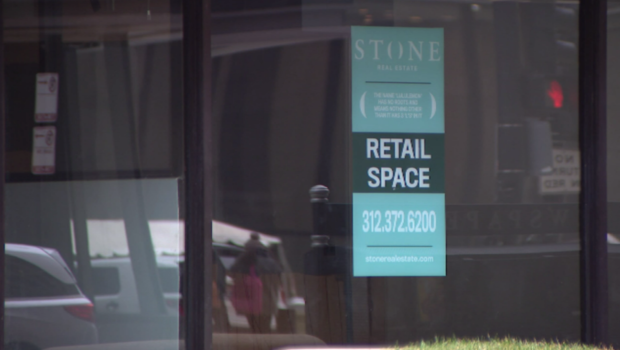Downtown rebound: The Loop seeing return of hustle and bustle, but some pandemic changes have stuck
CHICAGO (CBS) -- What does the future of the conventional American downtown look like, and did the pandemic change it forever? Studies show the COVID-19 pandemic caused a major shift in cities across the country.
It's a shift some researchers indicate could be the beginning of the end for downtown areas, with remote work changing their landscape. So, what does it mean for Chicago? Will we see a pre-pandemic city again? And how do we stack up nationally?
CBS 2 spent weeks working to answer those questions. Our team zoomed in locally, taking a close look at industries across Chicago, and hyper-focused in on the city's epicenter, The Loop.
Three years since the start of the pandemic, we're seeing hustle and bustle in the city's center again, but some of the changes the pandemic brought stuck around, especially in work culture.
Chicago office buildings are at an occupancy rate right around half of where they were pre-pandemic.
"Office occupancy remained on track with other large metros like New York and Los Angeles during quarter four of 2022," according to the Chicago Loop Alliance's State of the Loop quarterly operations report, "Hybrid work schedules and increased flexibility makes this data point confusing at times. Actual individuals going into offices is higher than office occupancy data suggests, due to more inconsistency for in-person days as many workers come in less days per week than pre-pandemic."
RELATED: How one downtown rebounded from the pandemic, even as others struggle
Kelly Hoxie, the VP of operations for Chicago-based 4 Star Restaurant Group, has kept a close eye on those office buildings the past few years.
Hoxie leads the restaurant Remington's in the Loop, where downtown workers are the bread and butter; the downtown lunch crowd.
"We've really struggled over the years with COVID," Hoxie told CBS 2.
The group was forced to close two other restaurants, but when The Loop lost lunch almost entirely, they pivoted at Remington's – offering happy hours and promoting private parties to bridge the gap.
Now, finally, Hoxie says a lunch crowd is trickling back in again.
"So, little by little, we're starting to see it. It's just taken a long time to get there," Hoxie told CBS 2.
Just down Michigan Avenue, Kilwins' doors are still open, despite a 40% drop in sales since before the pandemic, when franchise co-owner Janel Jackson said they were doing well.
"Pre-pandemic, we were thriving," Jackson said.
Jackson told CBS 2 that special orders help during the colder months at the ice cream and confection shop, but with fewer people walking by and walking in, they were forced to change their hours.
"A lot of places around here, they close up early, or they're not open on certain days – like Mondays – and the closing early has affected us, because we are the dessert spot," Jackson said.
So they're opening later and closing earlier now in The Loop.
"But it's definitely not the same, but that's not to say it's not going to get back to where it was," Jackson said, hopeful to see crowds pick back up.
RELATED: Downtown Rebound: Pandemic business recovery in Los Angeles
Whether you see the change in the Loop as office buildings half-full or half-empty, slashed office occupancy continues to impact The Loop.
"The Loop has long been driven by office workers," said Michael Edwards, President of the Chicago Loop Alliance. "We – like cities across the country, and around the world, frankly – have had trouble getting people back into their offices."
Remote and hybrid work, part home and part office, are both challenging what the city's center was built on, but Edwards said The Loop is up for the challenge.
"It used to be that you had to reduce the friction for people to come down and shop and enjoy downtown, because they had to come to work, but they didn't have to decide to come to the theater. Well now what's happening is I think people are getting bored at home, and so any excuse to come downtown and have some fun, they're coming down," he said.
More people are living downtown, according to their Loop residential impact study.
With more people living in the Loop, up from the 2020 census, the study indicates the city center has grown as a neighborhood faster than the other communities making up the downtown area.
"Our theaters are totally rocking it downtown, and the art galleries, and the symphony. Over a million people were down here just in this last quarter," Edwards said.
Since 2016, The Loop Alliance has kept track of how many people are walking downtown by using pedestrian counters.
"We are counting the number of pedestrians walking up and down the street," Edwards explained.
There are 20 counters placed along State Street and Michigan Avenue. They aren't cameras. They are counters, solely used to gauge how many people are downtown at any given time, according to Edwards.
"Since the pandemic, it's become our core tracking of the revitalization or the recovery of the Loop," Edwards said.
At last check, the pedestrian counters showed Chicago at 85% of its 2019, pre-pandemic, numbers. At the peak of the pandemic? They showed a low of 20%.
The Chicago Loop Alliance isn't the only organization using technology to track foot traffic.
A University of Toronto and UC Berkeley study analyzed cell phone data pre- and post-pandemic in 62 major cities in the U.S. and Canada, then determined how downtown activity looks now compared to then.
Researchers found cities like San Francisco at 31% of their previous activity. Meanwhile, Salt Lake City had a high at 135%.
Where did Chicago rank? 48th of 62. According to the study, Chicago is 50% recovered.
RELATED: Will San Francisco's downtown shake off the pandemic blues?
Those researchers also suggest pivoting is the answer; reimagining the downtown experience, something CBS 2 heard repeatedly from city officials and industry leaders when reporting this story.
Pivoting and re-imagining the downtown experience is a priority for those working in retail real estate, according to John Vance, Principal at Stone Real Estate.
"The reason that Loop retail exists is that retailers were attracted to the density," Vance said.
Vance said retail vacancy is the highest it's been in The Loop.
"It may be the most powerful struggle that the Loop retail market has ever encountered," Vance said.
But Vance said Loop vacancy rates have stabilized, and are trending in a better direction. For example, Saks Off Fifth announced its return to State Street.
"The key is bringing density back in a significant and consistent manner," Vance told CBS 2.
It's something he is confident can and will happen in the coming years.
"We as a human race have been shopping physically since the days of Cleopatra. It just doesn't go away. Because of technology, it adapts," he said.
Looking at hotels? Demand was up more than 60% last year in Chicago, when the city reached around 80% of its pre-pandemic numbers, according to the Illinois Hotel and Lodging Association (IHLA).
"On a weekly basis, occupancy rates are coming pretty darn close to pre-pandemic levels but aren't quite there yet. Any given week, we see demand for hotel rooms reaching anywhere between 70 and 90% of pre-pandemic levels. We still do not anticipate a full recovery of hotel occupancy rates until 2025. But things are much better now than they were even a year ago. The optimism has certainly grown throughout the past twelve months and 2022 ended better than most expected," IHLA President Michael Jacobson told CBS 2
RELATED: Downtown Boston struggling to rebound after COVID pandemic
So, will we see a pre-pandemic downtown Chicago again? Is our shopping, dining, and entertainment hub here to stay in the age of a changing work dynamic?
"Downtown is back. It's a little different, but it's still as great as it's ever been," Edwards said.
"I'm very proud of our city," Hoxie said.
"Things take time, and they don't grow overnight. So I think we're going to get back to where we were, especially as businesses and people just continue to innovate and think creatively," Jackson said.
RELATED: Downtown Baltimore attracts more tourists than other cities







